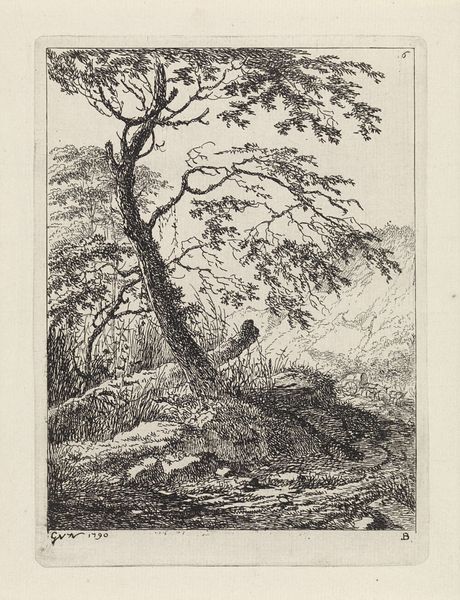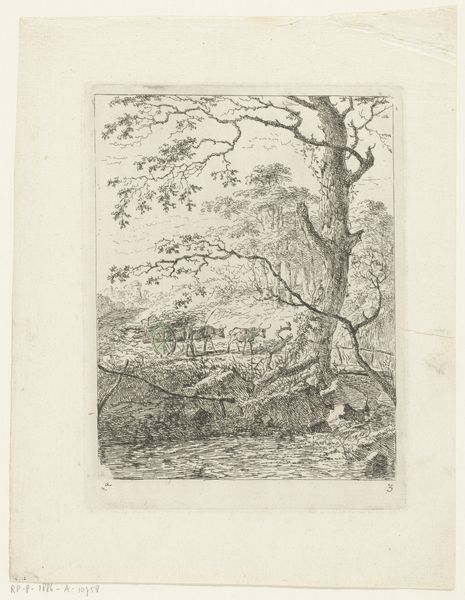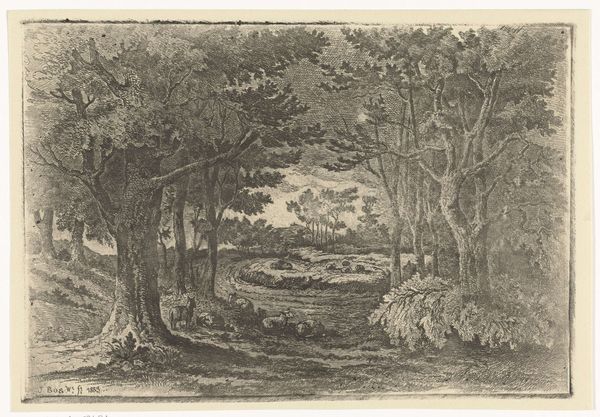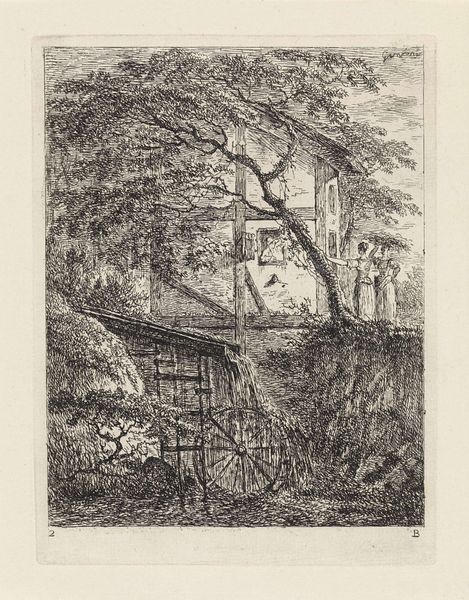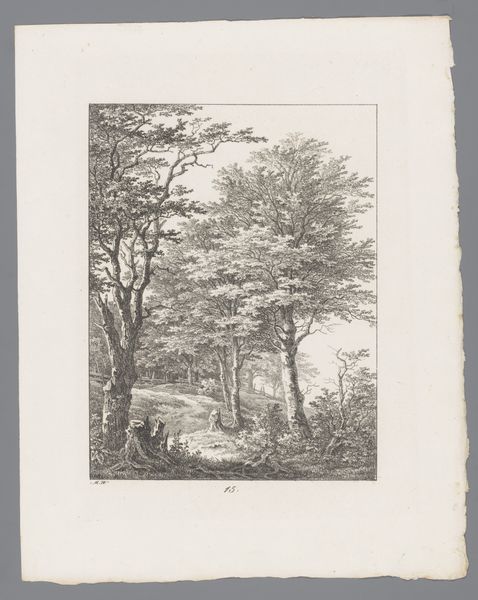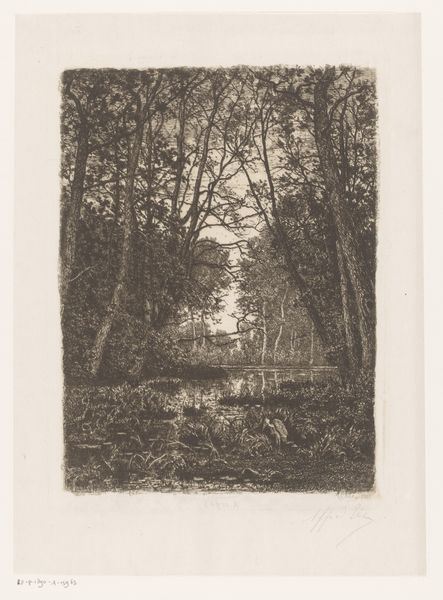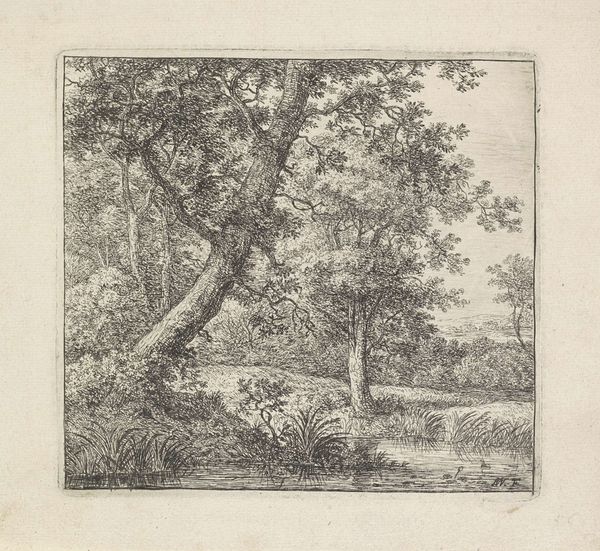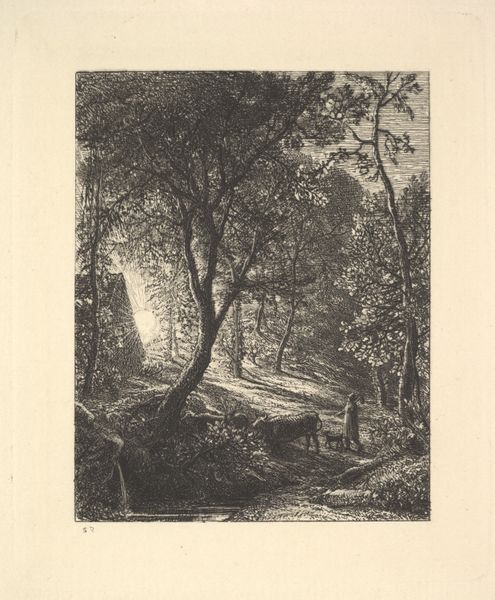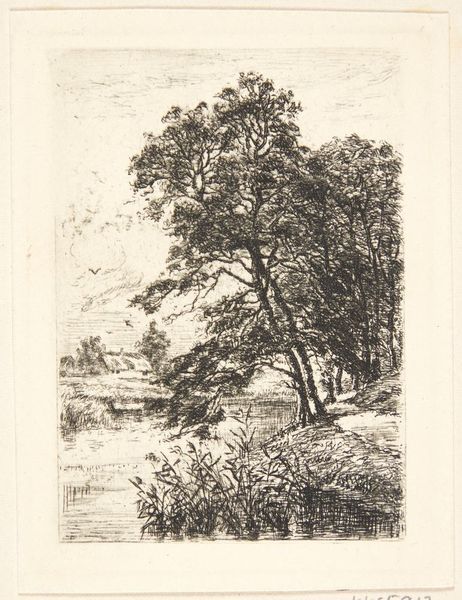
drawing, print, etching, engraving
#
drawing
# print
#
etching
#
landscape
#
engraving
Dimensions: height 199 mm, width 150 mm
Copyright: Rijks Museum: Open Domain
Gerard van Nijmegen made this etching of a tree by a stream and an oxcart sometime in the late 18th century, a period marked by significant social and economic stratification in Europe. The image evokes the agrarian life of the time, a life deeply intertwined with cycles of nature, but also with the realities of labor and dependency. Nijmegen’s meticulous detail in rendering the natural elements – the gnarled roots of the tree, the flowing stream, the heavy-laden cart – invites us to consider our relationship with the environment and the labor that sustains us. Consider the position of the peasant. Their identity is closely tied to the land, and their daily existence is a testament to the physical demands of survival. The oxcart itself becomes a symbol of this existence, a tool of burden and a representation of the social structures in place. While we might find a certain romanticism in the rural scene, it's vital to remember the social and economic forces that dictated the lives represented in this artwork.
Comments
No comments
Be the first to comment and join the conversation on the ultimate creative platform.
